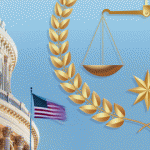 On Jan. 30, the U.S. Food & Drug Administration (FDA) approved suzetrigine (Journavx, formerly VX-548), a first-in-class, non-opioid analgesic tablet, for the treatment of adults with moderate to severe acute pain. The agent reduces pain by selectively inhibiting NaV1.8, a voltage-gated sodium channel that is a pain-signaling pathway in the peripheral nervous system.1
On Jan. 30, the U.S. Food & Drug Administration (FDA) approved suzetrigine (Journavx, formerly VX-548), a first-in-class, non-opioid analgesic tablet, for the treatment of adults with moderate to severe acute pain. The agent reduces pain by selectively inhibiting NaV1.8, a voltage-gated sodium channel that is a pain-signaling pathway in the peripheral nervous system.1
The FDA initially accepted the new drug application for suzetrigine for priority review in July 2024. The agent ultimately received FDA fast track and breakthrough therapy designations for the treatment of moderate to severe acute pain.2
The Research
In clinical trials of more than 2,000 patients aged 18–80, suzetrigine was evaluated for pain efficacy. In a phase 2 study in patients with painful diabetic neuropathy, suzetrigine was well tolerated and effective, showing a statistically significant improvement in post-surgical pain intensity.3
The current FDA approval is supported by two randomized, double-blind, placebo- and active-controlled trials that evaluated suzetrigine’s efficacy for acute post-surgical pain. One trial evaluated patients post-abdominoplasty, and the other evaluated patients post-bunionectomy.3,4
In rheumatology, many patients first present with pain complaints. Although these preapproval clinical studies were conducted in post-surgical pain relief, the drug is approved to treat moderate to severe acute pain and holds promise for the treatment of other types of pain.
In these studies, suzetrigine exhibited statistically significantly superior reductions in pain compared with placebo. Also, patients with inadequate pain relief were allowed to use ibuprofen as a rescue medication as needed. Both studies evaluated the time-weighted sum of the pain intensity difference from 0 to 48 hours (SPID48), compared with placebo, as well as a clinically meaningful reduction in pain from baseline at 48 hours on the Numeric Pain Rating Scale (NPRS), as primary end points. The primary end points described below were met:
- Abdominoplasty: the least square (LS) mean difference in SPID48 between VX-548 and placebo=48.4 (95% confidence interval [CI]: 33.6, 63.1; P<0.0001); and
- Bunionectomy: LS mean difference in SPID48 between VX-548 and placebo=29.3 (95% CI: 14.0, 44.6; P=0.0002).
Secondary end points: A key secondary end point tested the hypothesis that suzetrigine would be superior to hydrocodone bitartrate/acetaminophen (HB/APAP) on SPID48 post-surgery. Neither clinical trial achieved this secondary end point.
The next key secondary end point of both studies was the time to meaningful pain relief, defined as a ≥2-point reduction in the NPRS from baseline compared with placebo. In both studies, patients taking suzetrigine experienced a faster onset to meaningful pain relief compared with patients taking placebo, meeting the end point. The median time to meaningful pain relief for placebo-treated patients was eight hours in both clinical trials, compared with two hours for suzetrigine-treated patients in the abdominoplasty trial and four hours for suzetrigine-treated patients in the in bunionectomy trial.


